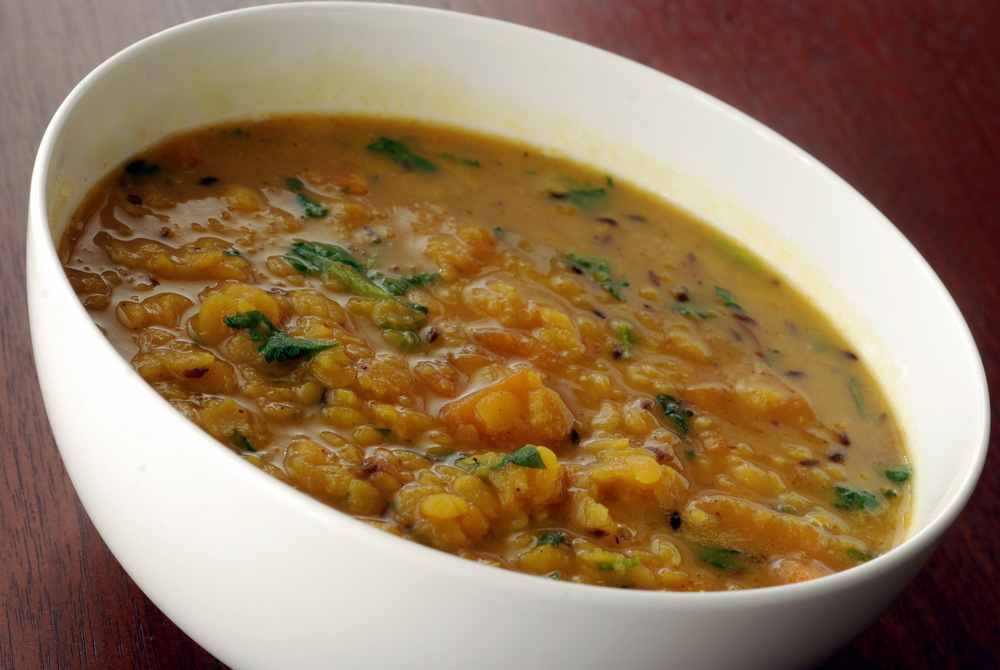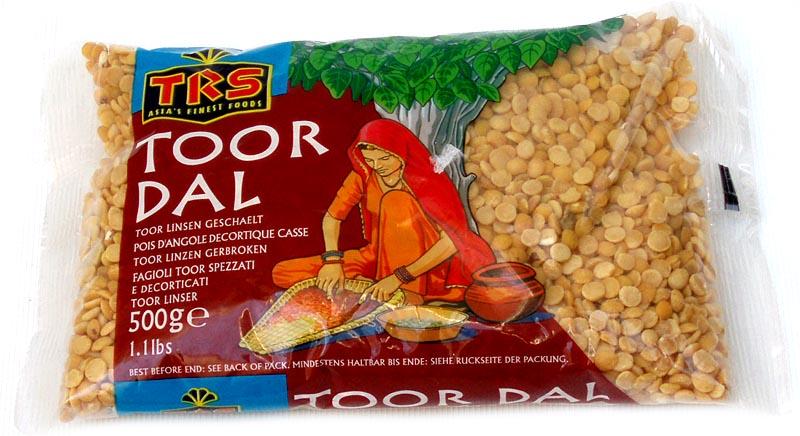Панийр Макни
Продукти:
- 200г прясно сирене
- 4 с.л. олио
- 4 цели семена кардамом
- 6 карамфилчета
- 2 пръчки канела
- 7-8 ск. чесън, смачкани
- 1 парченце джинджифил с дължина около 1см, нарязано
- 2 зелени люти чушки, нарязани
- 3 чаши доматено пюре
- сол на вкус
- 1 1/2 ч.л. червено чили на прах
- 3 с.л. скълцан пресен кориандър
- 1 ч.л. Гарам масала на прах
- 1с.л. Сушени листа от сминдухDried fenugreek leaves
(kasoori methi) 1 teaspoon
- 2с.л. мед
- Кондензирано мляко
Cut the paneer into
two thick slices. Heat two teaspoons oil in a non-stick pan. Add green
cardamoms, cloves, cinnamon, garlic and ginger and sauté till fragrant.
Add green chillies and continue to sauté. Cook tomato puree in another
non-stick pan with salt till it reduces slightly. Add this to the
ginger-garlic masala and cook. Heat the remaining oil in a grill pan and
place the paneer slices on it. Sprinkle some salt and red chilli powder
and grill, turning sides once, till both the sides are golden. Add
coriander leaves to the tomato gravy and mix. Add salt, remaining red
chilli powder, garam masala powder, kasoori methi and honey and mix
well. Once the paneer pieces are well grilled, take them off the pan and
cut into cubes. Add these cubes to the gravy and mix. Just before
serving add milk and mix. Serve hot with chapatti. - See more at: http://www.sanjeevkapoor.com/paneer-makhni.aspx#sthash.YNkDLMIH.dpuf
Метод на приготвяне
 1. Нарежете прясното сирене на малки парченца. Загрейте 2. чл.л олио в незалепващ тиган.
2. Добавете кардамома, карамфилчетата, канелата, чесъна и джинджифила и сотирайте, докато пуснат аромата си добре
3. Добавете зелените люти чушки и продължете да сотирате за още няколко минути.
4. Сгответе доматеното пюре в друг незалепващ домакински съд със сол, докато малко се сгъсти.Добавете това към смеска в друдия тиган и продължавайте да готвите.
1. Нарежете прясното сирене на малки парченца. Загрейте 2. чл.л олио в незалепващ тиган.
2. Добавете кардамома, карамфилчетата, канелата, чесъна и джинджифила и сотирайте, докато пуснат аромата си добре
3. Добавете зелените люти чушки и продължете да сотирате за още няколко минути.
4. Сгответе доматеното пюре в друг незалепващ домакински съд със сол, докато малко се сгъсти.Добавете това към смеска в друдия тиган и продължавайте да готвите.
 5. Загрейте оставащото олио в грил-тиган и сложете парченцата прясно сирене в него.Поръсете с малко лют червен пипер и го печете, докато придобият златист цвят. Добавете листа от кориандър към доматения сос и разбъркайте.
6. Добавете сол, оставащия червен пипер, гарам масала, листата от сминдух и меда и разбъркайте добре.Когато парченцата сирене са добре изпечени, извадете ги от тигана и ги добавете към соса.
7. Непосредствено преди сервирането, добавете мляко и разбъркайте. Сервирайте топло с чапати
Добър апетит!
5. Загрейте оставащото олио в грил-тиган и сложете парченцата прясно сирене в него.Поръсете с малко лют червен пипер и го печете, докато придобият златист цвят. Добавете листа от кориандър към доматения сос и разбъркайте.
6. Добавете сол, оставащия червен пипер, гарам масала, листата от сминдух и меда и разбъркайте добре.Когато парченцата сирене са добре изпечени, извадете ги от тигана и ги добавете към соса.
7. Непосредствено преди сервирането, добавете мляко и разбъркайте. Сервирайте топло с чапати
Добър апетит!


Използвайте връзките в съставките на рецептата, за да поръчате или разгледате продуктите.
Paneer Makhni - english version
Paneer
(cottage cheese) 200 grams•Oil 4 teaspoons•Green cardamoms 4•Cloves
6•Cinnamon 2 inch stick•Garlic,crushed 7-8 cloves•Ginger,chopped 1 1/2
inch piece•Green chillies,chopped 2•Fresh tomato puree 3 cups•Salt to
taste•Kashmiri red chilli powder 1 1/2 teaspoons•Fresh coriander
leaves,chopped 3 tablespoons•Garam masala powder 1 teaspoon•Dried
fenugreek leaves (kasoori methi) 1 teaspoon•Honey 2 tablespoons•Skimmed
milk - See more at:
http://www.sanjeevkapoor.com/paneer-makhni.aspx#sthash.oNDEwlX4.dpuf
Paneer
(cottage cheese) 200 grams•Oil 4 teaspoons•Green cardamoms 4•Cloves
6•Cinnamon 2 inch stick•Garlic,crushed 7-8 cloves•Ginger,chopped 1 1/2
inch piece•Green chillies,chopped 2•Fresh tomato puree 3 cups•Salt to
taste•Kashmiri red chilli powder 1 1/2 teaspoons•Fresh coriander
leaves,chopped 3 tablespoons•Garam masala powder 1 teaspoon•Dried
fenugreek leaves (kasoori methi) 1 teaspoon•Honey 2 tablespoons•Skimmed
milk 1/4 cup - See more at:
http://www.sanjeevkapoor.com/paneer-makhni.aspx#sthash.oNDEwlX4.dpuf
Paneer
(cottage cheese) 200 grams•Oil 4 teaspoons•Green cardamoms 4•Cloves
6•Cinnamon 2 inch stick•Garlic,crushed 7-8 cloves•Ginger,chopped 1 1/2
inch piece•Green chillies,chopped 2•Fresh tomato puree 3 cups•Salt to
taste•Kashmiri red chilli powder 1 1/2 teaspoons•Fresh coriander
leaves,chopped 3 tablespoons•Garam masala powder 1 teaspoon•Dried
fenugreek leaves (kasoori methi) 1 teaspoon•Honey 2 tablespoons•Skimmed
milk 1/4 cup - See more at:
http://www.sanjeevkapoor.com/paneer-makhni.aspx#sthash.oNDEwlX4.dpuf
Paneer
(cottage cheese) 200 grams•Oil 4 teaspoons•Green cardamoms 4•Cloves
6•Cinnamon 2 inch stick•Garlic,crushed 7-8 cloves•Ginger,chopped 1 1/2
inch piece•Green chillies,chopped 2•Fresh tomato puree 3 cups•Salt to
taste•Kashmiri red chilli powder 1 1/2 teaspoons•Fresh coriander
leaves,chopped 3 tablespoons•Garam masala powder 1 teaspoon•Dried
fenugreek leaves (kasoori methi) 1 teaspoon•Honey 2 tablespoons•Skimmed
milk 1/4 cup - See more at:
http://www.sanjeevkapoor.com/paneer-makhni.aspx#sthash.oNDEwlX4.dpuf
Paneer
(cottage cheese) 200 grams•Oil 4 teaspoons•Green cardamoms 4•Cloves
6•Cinnamon 2 inch stick•Garlic,crushed 7-8 cloves•Ginger,chopped 1 1/2
inch piece•Green chillies,chopped 2•Fresh tomato puree 3 cups•Salt to
taste•Kashmiri red chilli powder 1 1/2 teaspoons•Fresh coriander
leaves,chopped 3 tablespoons•Garam masala powder 1 teaspoon•Dried
fenugreek leaves (kasoori methi) 1 teaspoon•Honey 2 tablespoons•Skimmed
milk 1/4 cup - See more at:
http://www.sanjeevkapoor.com/paneer-makhni.aspx#sthash.oNDEwlX4.dpuf
InPaneer Makhni
Paneer Makhni
Paneer Makhni
Paneer Makhni
Paneer Makhni
Ingredients
- Paneer (cottage cheese) 200
gram
- Oil 4 teaspoons
- Green cardamoms 4
- Cloves 6
- Cinnamon 2 inch stick
- Garlic,crushed 7-8 cloves
- Ginger,chopped 1 1/2 inch
piece
- Green chillies,chopped 2
- Fresh tomato puree 3 cups
- Salt to taste
- Kashmiri red chilli powder
1 1/2 teaspoons
- Fresh coriander
leaves,chopped 3 tablespoons
- Garam masala powder 1
teaspoon
- Dried fenugreek leaves
(kasoori methi) 1 teaspoon
- Honey 2 tablespoons
- Skimmed milk
Cut the paneer into
two thick slices. Heat two teaspoons oil in a non-stick pan. Add green
cardamoms, cloves, cinnamon, garlic and ginger and sauté till fragrant.
Add green chillies and continue to sauté. Cook tomato puree in another
non-stick pan with salt till it reduces slightly. Add this to the
ginger-garlic masala and cook. Heat the remaining oil in a grill pan and
place the paneer slices on it. Sprinkle some salt and red chilli powder
and grill, turning sides once, till both the sides are golden. Add
coriander leaves to the tomato gravy and mix. Add salt, remaining red
chilli powder, garam masala powder, kasoori methi and honey and mix
well. Once the paneer pieces are well grilled, take them off the pan and
cut into cubes. Add these cubes to the gravy and mix. Just before
serving add milk and mix. Serve hot with chapatti. - See more at: http://www.sanjeevkapoor.com/paneer-makhni.aspx#sthash.YNkDLMIH.dpuf
Method
1. Cut the paneer into two thick
slices. Heat two teaspoons oil in a non-stick pan.
2. Add green cardamoms, cloves,
cinnamon, garlic and ginger and sauté till fragrant.
3. Add green chillies and
continue to sauté.
4. Cook tomato puree in another non-stick pan with salt till it
reduces slightly. Add this to the ginger-garlic masala and cook.
5. Heat the
remaining oil in a grill pan and place the paneer slices on it. Sprinkle some salt
and red chilli powder and grill, turning sides once, till both the sides are
golden. Add coriander leaves to the tomato gravy and mix.
6. Add salt, remaining
red chilli powder, garam masala powder, kasoori methi and honey and mix well.
Once the paneer pieces are well grilled, take them off the pan and cut into
cubes. Add these cubes to the gravy and mix.
7. Just before serving add milk and
mix. Serve hot with chapatti.
Paneer (cottage cheese) 200 grams•Oil 4 teaspoons•Green cardamoms 4•Cloves 6•Cinnamon 2 inch stick•Garlic,crushed 7-8 cloves•Ginger,chopped 1 1/2 inch piece•Green chillies,chopped 2•Fresh tomato puree 3 cups•Salt to taste•Kashmiri red chilli powder 1 1/2 teaspoons•Fresh coriander leaves,chopped 3 tablespoons•Garam masala powder 1 teaspoon•Dried fenugreek leaves (kasoori methi) 1 teaspoon•Honey 2 tablespoons•Skimmed milk - See more at: http://www.sanjeevkapoor.com/paneer-makhni.aspx#sthash.oNDEwlX4.dpuf
Paneer (cottage cheese) 200 grams•Oil 4 teaspoons•Green cardamoms 4•Cloves 6•Cinnamon 2 inch stick•Garlic,crushed 7-8 cloves•Ginger,chopped 1 1/2 inch piece•Green chillies,chopped 2•Fresh tomato puree 3 cups•Salt to taste•Kashmiri red chilli powder 1 1/2 teaspoons•Fresh coriander leaves,chopped 3 tablespoons•Garam masala powder 1 teaspoon•Dried fenugreek leaves (kasoori methi) 1 teaspoon•Honey 2 tablespoons•Skimmed milk 1/4 cup - See more at: http://www.sanjeevkapoor.com/paneer-makhni.aspx#sthash.oNDEwlX4.dpuf
Paneer (cottage cheese) 200 grams•Oil 4 teaspoons•Green cardamoms 4•Cloves 6•Cinnamon 2 inch stick•Garlic,crushed 7-8 cloves•Ginger,chopped 1 1/2 inch piece•Green chillies,chopped 2•Fresh tomato puree 3 cups•Salt to taste•Kashmiri red chilli powder 1 1/2 teaspoons•Fresh coriander leaves,chopped 3 tablespoons•Garam masala powder 1 teaspoon•Dried fenugreek leaves (kasoori methi) 1 teaspoon•Honey 2 tablespoons•Skimmed milk 1/4 cup - See more at: http://www.sanjeevkapoor.com/paneer-makhni.aspx#sthash.oNDEwlX4.dpuf
Paneer (cottage cheese) 200 grams•Oil 4 teaspoons•Green cardamoms 4•Cloves 6•Cinnamon 2 inch stick•Garlic,crushed 7-8 cloves•Ginger,chopped 1 1/2 inch piece•Green chillies,chopped 2•Fresh tomato puree 3 cups•Salt to taste•Kashmiri red chilli powder 1 1/2 teaspoons•Fresh coriander leaves,chopped 3 tablespoons•Garam masala powder 1 teaspoon•Dried fenugreek leaves (kasoori methi) 1 teaspoon•Honey 2 tablespoons•Skimmed milk 1/4 cup - See more at: http://www.sanjeevkapoor.com/paneer-makhni.aspx#sthash.oNDEwlX4.dpuf
Paneer (cottage cheese) 200 grams•Oil 4 teaspoons•Green cardamoms 4•Cloves 6•Cinnamon 2 inch stick•Garlic,crushed 7-8 cloves•Ginger,chopped 1 1/2 inch piece•Green chillies,chopped 2•Fresh tomato puree 3 cups•Salt to taste•Kashmiri red chilli powder 1 1/2 teaspoons•Fresh coriander leaves,chopped 3 tablespoons•Garam masala powder 1 teaspoon•Dried fenugreek leaves (kasoori methi) 1 teaspoon•Honey 2 tablespoons•Skimmed milk 1/4 cup - See more at: http://www.sanjeevkapoor.com/paneer-makhni.aspx#sthash.oNDEwlX4.dpuf
InPaneer Makhni
Paneer Makhni
Paneer Makhni
Paneer Makhni
Paneer Makhni




























